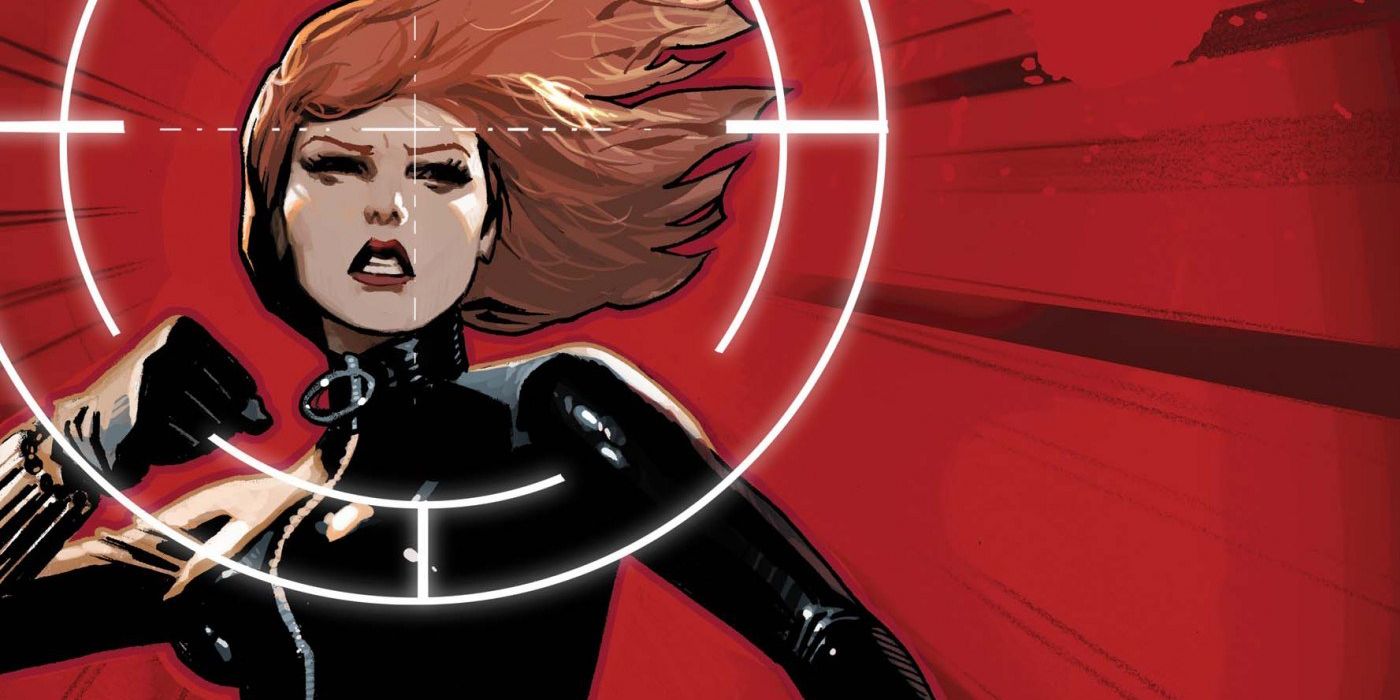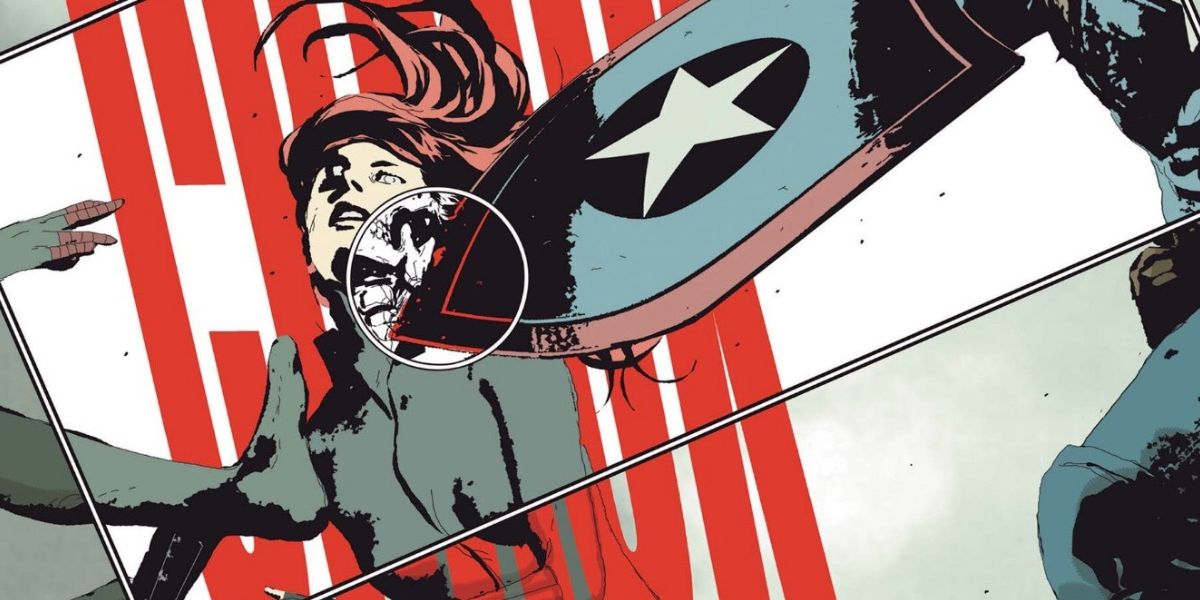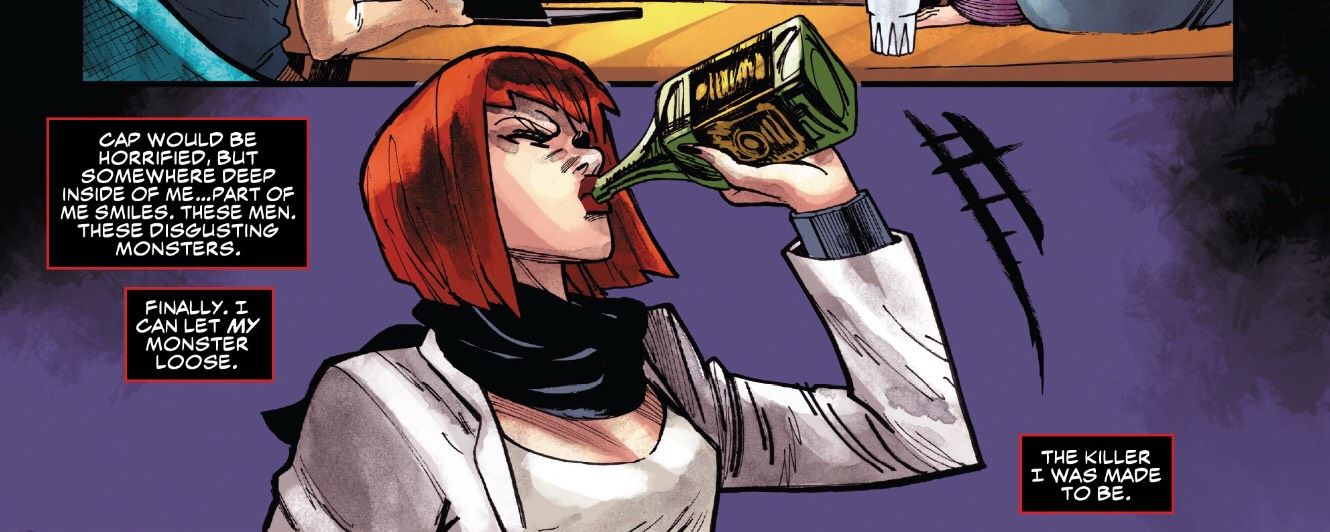Black Widow #1 is the first solo comic series devoted to Natasha Romanoff since Captain America killed her in the Secret Empire event. The Soska sisters, Jen and Sylvia, obviously had a lot to consider in taking on such an iconic character in the aftermath of a literally life-changing event.
Black Widow has been a part of many teams in her history, most notably S.H.I.E.L.D. and the Avengers, but her death cut her loose from the expectations and moral codes of others. As a result, the Soskas are finally giving Black Widow the liberation, and storyline, she deserves.
Secret Empire and Tales of Suspense
Black Widow’s origin story from Tales of Suspense #52 paints her character in a stereotypical way for the time -- empty and cold, yet irresistible to men. However, Natasha has proven time and time again that she actually has a heart and is willing to give her life to get the job done. In the '60s, the Avengers comics showed Natasha severely injuring herself to destroy the Psychotron, saying her life doesn’t matter. Natasha has partnered up with various characters and teams to accomplish her missions, such as Daredevil and the X-Men. She’s also proven that she has leadership skills, even as early as the '70s, when she was the leader of the Champions.
RELATED: REVIEW: Black Widow #1 is an Uneven Debut
The Secret Empire event placed Black Widow once again in a leadership role as the head of the Resistance against the evil Captain America. In her attempt to save Miles Morales, Black Widow was killed by Captain America in a brutal shield blow to the neck. The story moved on, and it seemed like Black Widow was dead for good.
Tales of Suspense, relaunched in 2017 with Issue #100, resurrected Natasha in an interesting way -- as a clone with implanted memories. The Red Room’s Black Widow Ops program was behind this, and it is even heavily implied this isn’t the first time this has happened. With that kind of revelation, it’s no wonder that Natasha brings down the Red Room in a fiery blaze. As a result, Natasha has to question which of her memories are real and which have been implanted. And a deception at that level made her, justly, full of rage.
Black Widow #1
Black Widow #1 gives Natasha a new direction. While Black Widow has been a leader and a productive member of various teams, this is what ultimately got her killed. Though she helps Captain America (the good one) at the beginning of the issue, his preaching reminds her that her moral code is different than his and always will be. As we know, Black Widow famously operates in grey areas. She is about justice in the long run, but her version of justice is immediate and violent.
RELATED: There’s No Way Marvel’s Black Widow Movie Will Be R-Rated
Since she is technically “dead,” Natasha is no longer tied down by organizations and can operate according to her own code for once. She leaves for Madripoor, a place where she can be a fully realized killer version of herself, clone or not. This is where she meets Tyger Tiger, who is just as fierce and out for blood as Natasha. When Natasha learns that Madripoor’s missing girls are being exploited online to do unspeakable acts, she knows that this is how she can release her inner, wrathful killer.
This is the Natasha we’ve been dying to see more of. We now have the opportunity, thanks to the Soska sisters, to see what Black Widow’s limits are. Not only is there the potential to see what she can accomplish on her own with no affiliations and responsibilities, but there is also potential to see how dark Black Widow’s grey areas can get. How much blood will it take for Natasha’s inner monster to be sated, if ever? We hope to get more answers to this in future issues.



